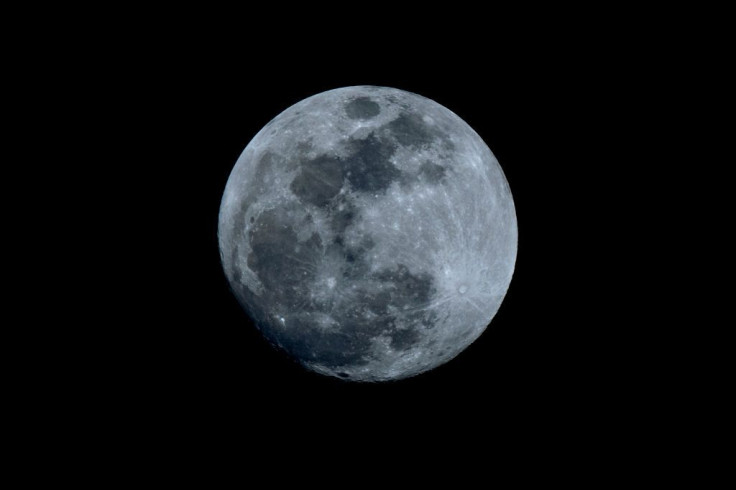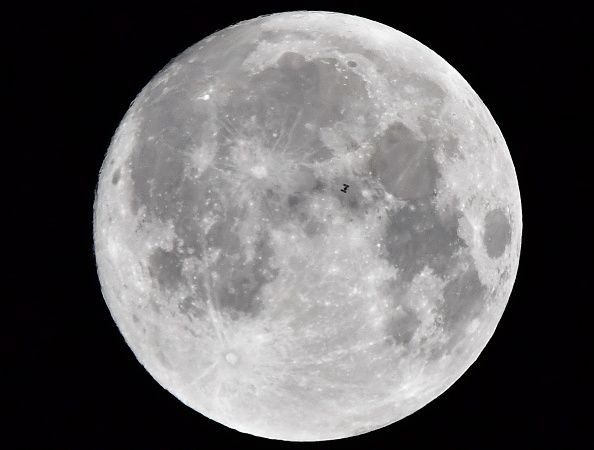Moon Shrinking Like A Raisin Responsible For Moonquakes, Study Shows

The Moon continues to create the lunar version of our earthquakes called "moonquakes" despite being much smaller and colder than Earth, a new study has found.
According to findings published in the journal Nature Geoscience, researchers studied lunar data obtained by the Apollo mission and found evidence of relatively recent tectonic activity. And one explanation they offered as to why the Moon is still tectonically active despite not having a molten interior like Earth is that our natural satellite is quivering as it shrivels.
“Our analysis gives the first evidence that these faults are still active and likely producing moonquakes today as the Moon continues to gradually cool and shrink," Thomas Watters, senior scientist in the Center for Earth and Planetary Studies at the Smithsonian’s National Air and Space Museum in Washington, said in a statement on NASA's website. “Some of these quakes can be fairly strong, around five on the Richter scale.”
Back in 2010, detailed images of the Moon obtained by NASA's Lunar Reconnaissance Orbiter showed thousands of faults on the lunar surface that were estimated to be less than 50 million years old. According to the researchers, these faults were produced by moonquakes.
Between 1969 and 1977, seismometers placed on the lunar surface during the Apollo 12, 14, 15 and 16 missions detected 28 shallow moonquakes with magnitudes ranging from 2 to 5 on the Richter scale. Though it is believed that some were caused by activity on lunar faults, scientists were not able to determine where the sources of the moonquakes were.
With the use of analytical techniques, the authors of the new paper were able to more accurately pinpoint the epicenters of the moonquakes. They found that eight of the shallow moonquakes detected by the Apollo missions occurred within 18 miles (30 kilometers) of young lunar faults. Six of the eight quakes occurred when the Moon was at the farthest point in its orbit from Earth. During this time, some regions of the satellite experienced the greatest amount of stress from our planet's gravitational force.
The new research found evidence that the Moon's tectonic activity occurs due to the satellite shriveling like a raisin as its interior cools and shrinks, becoming more than about 150 feet (50 meters) skinnier over the last several hundred million years. But since the lunar crust is brittle, it breaks and produces thrust faults, where one section of crust is pushed up over another.
“We think it’s very likely that these eight quakes were produced by faults slipping as stress built up when the lunar crust was compressed by global contraction and tidal forces, indicating that the Apollo seismometers recorded the shrinking Moon and the Moon is still tectonically active,” Watters said.

But not all moonquakes are the result of tectonic activity in the Moon's crust. About 11,000 moonquakes recorded by the Apollo missions occurred around 500 to 680 miles (600 to 1,100 kilometers) below the lunar surface. According to previous studies, these moonquakes were produced by the Earth's gravitational pull on the Moon's interior. This could be compared to how the Moon's gravitational pull results to tides in Earth's seas.
Study co-author Nicholas Schmerr, a planetary seismologist at the University of Maryland at College Park, explained that some moonquakes also came from space rocks crashing into the Moon and spacecraft touching down on the lunar surface. About one moonquake recorded by the Apollo missions every day was the result of debris hitting the Moon.
NASA will soon get the chance to obtain more data about moonquakes when the space agency sends humans back to the Moon in 2024.
“Establishing a new network of seismometers on the lunar surface should be a priority for human exploration of the Moon, both to learn more about the Moon’s interior and to determine how much of a hazard moonquakes present,” said co-author Renee Weber, a planetary seismologist at NASA's Marshall Space Flight Center in Huntsville, Alabama.
© Copyright IBTimes 2024. All rights reserved.





















